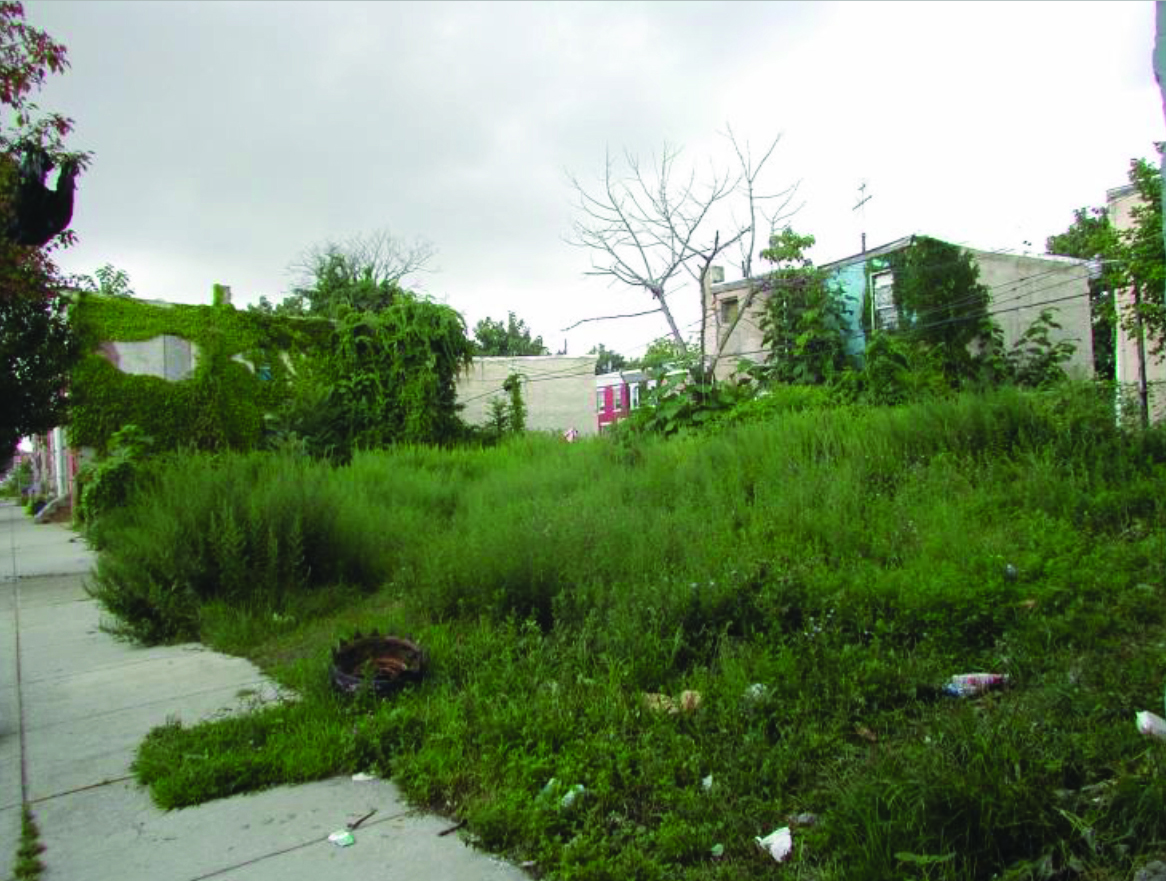Table Of Content

Residents in new affordable housing projects will be living in complexes that will stay safe over the long haul. Public parks and other public spaces will become vibrant centers of activity rather than forbidding “no man’s lands”. Small businesses, such as convenience stores, will become safer for patrons and employees alike. By making all City agencies, not just police departments, accountable for fighting crime, the Design Out Crime initiative also addresses the fractured nature of public safety efforts in major cities. By bringing together departments to work cooperatively on the guidelines and their implementation, it has induced a shift in the City’s organizational culture.
new developments in such a way where the opportunity for crime is reduced,
Protection of these assets is a concern and should be considered throughout the design and construction process. For multi-family developments, elements such as drain pipes, parapets and ledges should not be located near windows, corridors or balconies. If unavoidable, they should face parking lots, children’s playground or roads to allow for natural surveillance. Another method is to build houses, streets, transport hubs and retail settings in a way that promotes visibility. This can include making windows and entrances of buildings face each other and clever use of lighting.
Crime Prevention Through Environmental Design and Community Policing

Additionally, these objectives can be achieved by assignment of space to designated users in previously unassigned locations. Natural surveillance increases the perceived risk of attempting deviant actions by improving visibility of potential offenders to the general public. Natural surveillance occurs by designing the placement of physical features, activities and people in such a way as to maximize visibility of the space and its users, fostering positive social interaction among legitimate users of private and public space. Potential offenders feel increased scrutiny, and thus inherently perceive an increase in risk. This perceived increase in risk extends to the perceived lack of viable and covert escape routes. ‘Crime Prevention Through Environmental Design’ (CPTED) is a crime prevention theory focusing on tactical design and the effective use of the built environment, which when applied, reduces both crime and the fear of crime.
Strategies
CPTED principles advocate for the integration of design elements combined with activities that create an environment where informal natural surveillance occurs more easily. This is also referred to as the “eyes of the street” concept that safe spaces are nurtured when the community has the opportunity and an underlying investment to observe, intervene and/or report potential crime to ensure a safe public space. Until the Design Out Crime initiative began, few City staff members and private developers gave much thought to the public safety implications of development projects.
City Launching Crime Prevention through Environmental Design Program - City of Spokane
City Launching Crime Prevention through Environmental Design Program.
Posted: Wed, 22 Nov 2017 08:00:00 GMT [source]
As of 2004[update], CPTED is popularly understood to refer strictly to the Newman/Crowe type models, with the Jeffery model treated more as multi-disciplinary approach to crime prevention which incorporates biology and psychology, a situation accepted even by Jeffery himself. A revision of CPTED, initiated in 1997, termed 2nd Generation CPTED, adapts CPTED to offender individuality, further indication that Jeffery's work is not popularly considered to be already a part of CPTED. In 2012 Woodbridge introduced and developed CPTED in prison and showed how design flaws allowed criminals to keep offending. WBDG is a gateway to up-to-date information on integrated 'whole building' design techniques and technologies. The goal of 'Whole Building' Design is to create a successful high-performance building by applying an integrated design and team approach to the project during the planning and programming phases. Putting together a CPTED plan involves a variety of departments (marketing, planning and design, maintenance, media relations, executives, etc.) and each specific principle of design will show individually how much the practice can benefit you and your organization.
The problems are apparent around Los Angeles and most major cities; decaying public housing projects, abandoned public spaces, unsafe convenience stores, and even burglarized single-family homes. Cities may ameliorate all of these conditions through careful attention to CPTED principles. Image/maintenance and activity support provide the community with reassurance and the ability to inhibit crime by citizen activities.
Effectiveness and criticism
New concepts in the geography of crime, known as environmental criminology (Brantingham & Brantingham, 1981), were added to CPTED such as activity generators, crime displacement, and movement predictors. Social descriptions of citizen participation and strengthening community supports were replaced with spatial descriptions of urban locations thereby shifting focus from the residents of an area to offender decision-making. Crime Prevention Through Environmental Design (CPTED, pronounced sep-ted) is a multidisciplinary approach to deterring criminal behavior that focuses on changing how places are laid out, and how they look and feel. Criminologist C. Ray Jeffrey coined the term in the 1970s around the same time that architect Oscar Newman’s ideas about “defensible space” took hold. The phrase began to gain acceptance after the publication of his 1971 book of the same name.
An often overlooked contribution of Jeffery in his 1971 book is outlining four critical factors in crime prevention that have stood the test of time. These are the degrees to which one can manipulate the opportunity for a crime to occur, the motivation for the crime to occur, the risk to the offender if the crime occurs, and the history of the offender who might consider committing the crime. The first three of these are within the control of the potential victim while the last is not. 4) Maintenance and Management — Keeping areas “clean and green” is the minimum standard for scheduled maintenance. Do not let things like graffiti, garbage and/or damaged property be seen by your positive users. Activity Support — Probably the biggest advocate, especially to a parks system, is the amount of space you have to add positive actors to your park.
In front yards, use waist-level, picket-type fencing along residential property lines can help control access and encourage surveillance. Use shoulder-level, open-type fencing along lateral residential property lines between side yards and extending to between back yards. They should be sufficiently clear of landscaping to promote social interaction between neighbors. Poorly defined front and rear yards could be defined by a small fence or by regular maintenance of the surrounding landscape.
For less than half the cost of one police officer for one year, the City has developed ground-breaking crime prevention work of enduring value. These City of Los Angeles General Funds are the only monies allocated to the program thus far. By 2004[update], elements of the CPTED approach had gained wide international acceptance due to law enforcement efforts to embrace it. The CPTED term "environment" is commonly used to refer to the external environment of the place. Jeffery's intention that CPTED also embrace the internal environment of the offender seems to have been lost, even on those promoting the expansion of CPTED to include social ecology and psychology under the banner of 2nd Generation CPTED. Wide-ranging recommendations to architects include the planting of trees and shrubs, the elimination of escape routes, the correct use of lighting, and the encouragement of pedestrian and bicycle traffic in streets.
These social and physical dimensions still exist in the CPTED movement today, although there is debate whether “target hardening” belongs within CPTED or within technical security, since the term seldom appears in any of the original writing of the CPTED pioneers. The second paper by Selby Coxon, Robbie Napper and Arthur De Bono gives an example of design with crime prevention. The research focuses on encouraging positive passenger behaviours rather than responding to negative criminal intent, and shows how manipulating the design of the environment can provoke desired changes in behaviour (Cornish and Clarke, 2003). The research also demonstrates the value in bringing design and crime together in a collaborative approach using a design methodology to provide inventive and relevant solutions to anti-social behaviour.
The enhanced visibility this creates is known as “passive surveillance”, which can deter some offenders. Los Angeles City Councilmember Laura Chick in 1995 created an inter-agency “Design Out Crime” task force, led by representatives of the City Planning Department and Police Department, but including eight City agencies. The task force developed a set of “Design Out Crime” guidelines, adopted officially by the City Council, for distribution to developers, architects, urban planners and others involved in the design of building projects. The guidelines are also used by City agencies, such as the Housing Department, as criteria in evaluating projects worthy of City funding.
Through the dissemination of the video and the application of simple, inexpensive techniques, the initiative gives community residents and small business owners concrete steps they can take to reduce crime. An existing crime problem is approached through a crime prevention framework such as problem-oriented policing (Scott and Kirby, 2012) to design a response to the problem. The problem is approached with a view to creating crime prevention values to counteract offending opportunity. Elements of the environment, object, policy, system and so on are changed to achieve the desired crime prevention outcomes (see, for example, Scott and Dedel, 2009). Territorial reinforcement measures make the normal user feel safe and make the potential offender aware of a substantial risk of apprehension or scrutiny.
If police expertise is engaged in the design and planning process and the principles of CPTED applied, opportunities for crime and disorder, and consequent calls for service, are reduced and safer communities are created. A Times analysis from 2022 found that stores in higher-income areas locked up fewer items even in places where property crime rates were higher, creating an additional burden for shoppers in certain neighborhoods. And inconsistencies in how locked merchandise is released to customers — sometimes workers hand you items to put in your cart, other times they escort merchandise to the register — raise the same questions of racial profiling that have long plagued retail establishments.
Tests show that the application of CPTED measures overwhelmingly reduces criminal activity. The most efficient, least expensive way to provide security is during the design process. Designers who are called on to address security and crime concerns must be able to determine security requirements, must know security technology, and must understand the architectural implications of security needs. 3) Territorial Reinforcement — This concept involves facilitating the process of turning an area over to legitimate users who will take ownership of the space and care for it. This helps eliminate or reduce nuisance behaviors because bad actors using the space receive increased monitoring.
Having a positive image in the community shows a sense of pride and self-worth that no one can take away from the owner of the property. Natural access control limits the opportunity for crime by taking steps to clearly differentiate between public space and private space. By selectively placing entrances and exits, fencing, lighting and landscape to limit access or control flow, natural access control occurs. During this period Sorensen worked with Ronald V. Clarke and the Sparta team to develop a new CPTED Curriculum that used Situational Crime Prevention as an underlying theoretical basis for CPTED measures. A curriculum was developed and trained to stakeholders in public and assisted housing, and follow-up CPTED assessments were conducted at various sites. The Sparta-led CPTED projects showed statistical reductions in self reported FBI UCR Part I crimes between 17% and 76% depending on the basket of CPTED measures employed in specific high crime, low income settings in the United States.

No comments:
Post a Comment